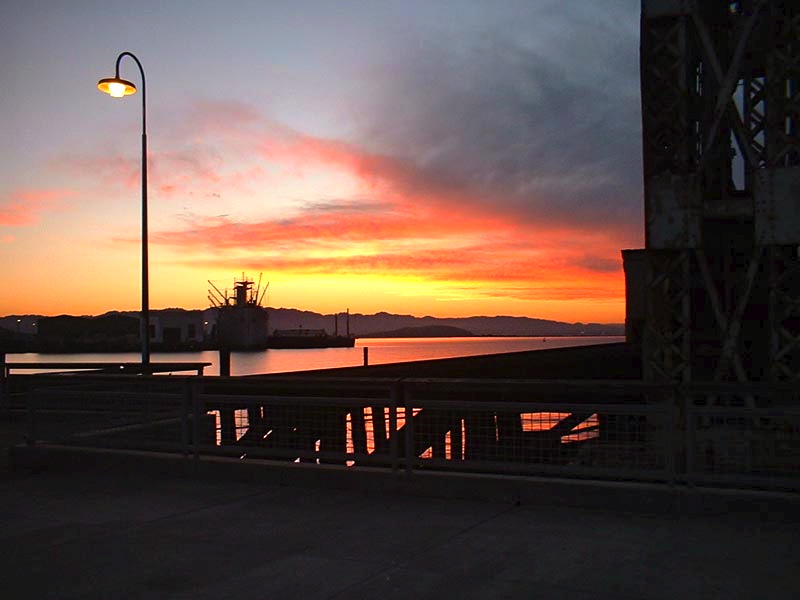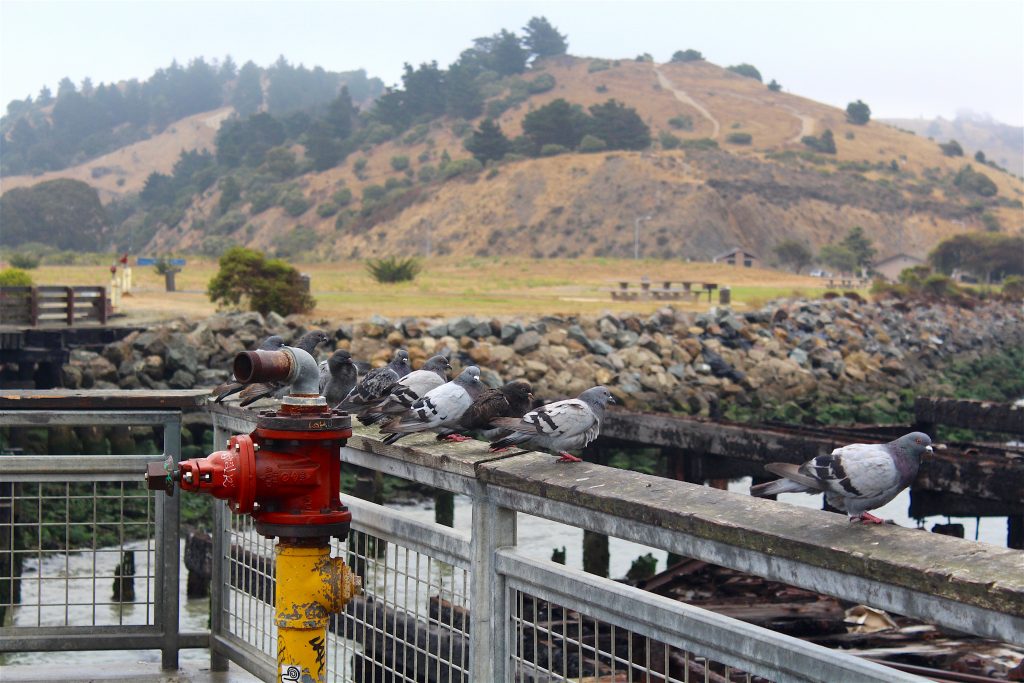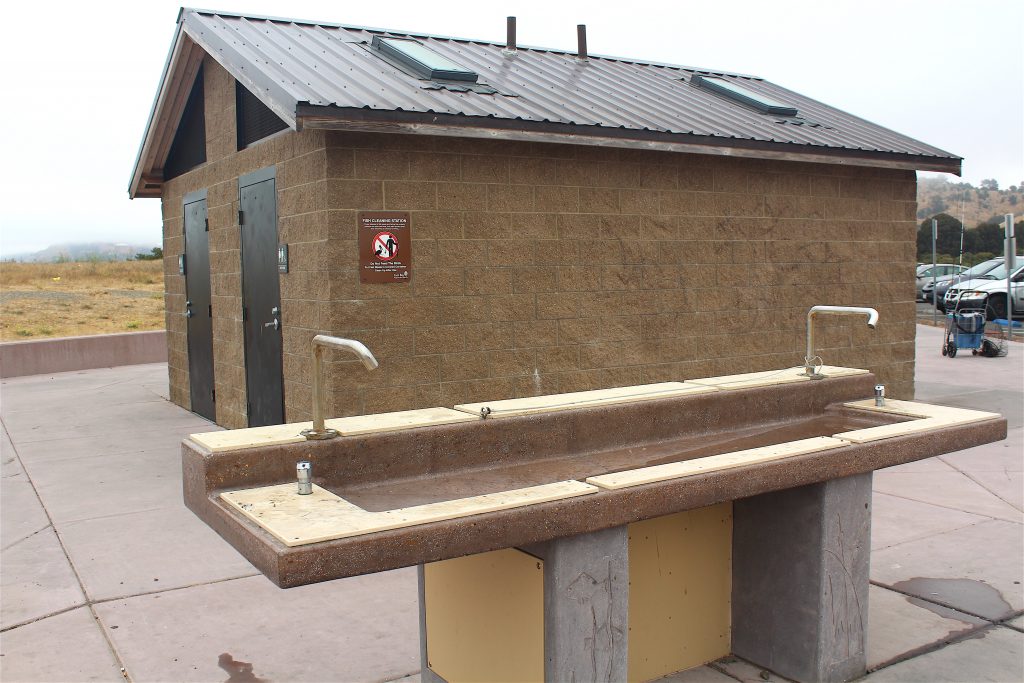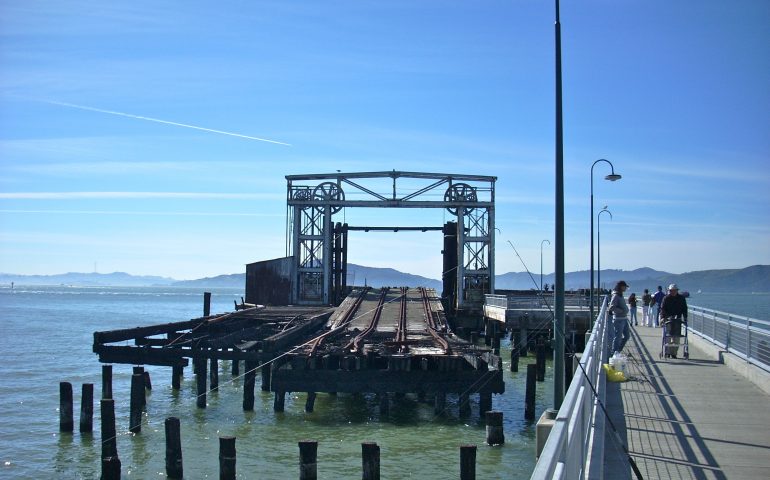<*}}}}}}}}}>< — An old shark tale:
Girls Battle With Savage Shark — Man-Eating Monster, After Hour’s Battle, Captured by Two Fair Heroines.
RICHMOND, Aug. 15. — Battling for almost an hour with a seven-foot shark of the man-eating variety two Richmond girls yesterday afternoon captured their prize off the wharf of the Richmond Navigation Company. The girls were Miss Marguerite Lauritzen daughter of Captain H. P. Lauritzen, head of the navigation company and Miss Gladys Pratt, who is visiting at the Lauritzen house. The fish, after being exhibited for several hours on Washington Avenue, was later tethered by a line to the wharf, where it may be viewed by curious visitors.
Miss Lauritzen and Miss Pratt watched the huge fish for several hours before they made up their minds to capture it. They then secured two large hooks, which they spliced to long poles. The torment then commenced. Finally one of the young women managed to hook the shark in the gill, and they almost landed it when the splicing broke and the hook was released
The fish then dived out of sight, but soon reappeared. With a quick and steady jab one of the hooks was thrust into the side of the shark, about a foot below its side fin. The combined strength of the two young women was required for its freedom. Without enlisting the aid of anyone, however, they finally brought the monster to the wharf.
Captain Lauritzen was then informed of the catch. When he viewed the fish he almost collapsed. Loading it onto a large auto truck, he carried it into the city, where he had it weighed. The fish, which is apparently about ten years old, tipped the scale at 149 pounds. It measured seven feet and three inches in length.
Both Miss Lauritzen and Miss Pratt are justly proud of the feat, for real man-eating sharks are very seldom seen in this section of the bay and are but seldom captured. —Oakland Tribune, August 15, 1914

History Note.
The area today known as Point Richmond was long the home of native Americans before coming under control of the Spanish in the early 1800s. The area became known as The Potrero (pastureland) of Don Francisco Castro’s huge Rancho San Pablo; later the point was called Point Stevens, appearing on charts of the Bay in 1850. Finally, a U.S. Government survey party designated the point of land jutting into the Bay as “Point Richmond.”
This pier is built on the remains of the old Santa Fe Ferry Terminal that was the western terminus of the Atchison, Topeka, and Santa Fe Railroad. As the story goes, Augustin S. MacDonald had the vision of the site as a port and railroad terminal. It was he who broached the idea to the movers and shakers at Santa Fe. They apparently liked the idea when they found out it was 12 miles closer by rail than the Peralta Street Terminal for ferries in Oakland.
On July 4, 1900, after construction of ferry slips and tracks to the site, the Santa Fe inaugurated service by delivering 200 passengers from San Francisco to Point Richmond on the Santa Fe’s first ferry, the Ocean Wave. After arrival, many of the people boarded the railroad’s first through train to Chicago. To handle freight connections, terminals were built at the foot of Channel Street in China Basin, a “car float” slip was built adjacent to Pier 54 in San Francisco, and further landing facilities were constructed in Oakland and Alameda. Connections were made to the Northwest Pacific Railroad facilities in Tiburon.
For three decades these various terminals (passenger, car and freight) were busy with traffic—but that would change with the opening of the Bay Bridge in 1936. Nevertheless, even though the Santa Fe discontinued its own passenger ferries in 1933, ferries and other boats transported rail cars, cargo and people from the terminal to San Francisco until 1980 (and nearby sat the Southern Pacific Golden Gate Ferry Terminal which operated during the 1920s and 1930s).
During much of the pier’s history, local anglers with the know-how, and connections, were able to go out and catch fish at the pier. Later, after the demise of the ferry operations, it became an even more important home for local fisherman—until a fire in 1984. Since that time local fishermen repeatedly spoke of a need for a local pier and apparently the East Bay Regional Park District listened.
In February of 2001, the Wildlife Conservation Board announced the final grant ($500,270) needed to complete the pier project that had been in the works for nearly ten years. The cost of more than $2,000,000 includes rehabilitation of nearly 3,000 square feet of structure area—replacement of wooden piers and steel piles—and repainting of the historic gallows structure and machinery house (as well as interpretive signs showing the history of the pier and how the machinery worked). Money for the project came from the Wildlife Conservation Fund, the California Coastal Conservancy ($492,000), Caltrans ($376,000) and funds raised by the East Bay Regional Park District itself ($713, 000).
Most of the old landings have been torn down and are now history. The Point Richmond Landing, even if in decrepit shape, gives evidence of those times when there were no bridges, no hundreds of thousands of cars crossing them daily, and much less crowding that seems to clog our daily life today.

Ferry Point Pier Facts
Hours: Signs say open from 7 AM to dusk but if you are inside the parking lot you can stay as long as you want.
Facilities: The pier itself includes lights and one trash can, nothing else. The park contains restrooms near the parking lot and a nice fish cleaning station. To the left of the park entry area is a path built down to the water for kayakers AND a shower that can be used to rinse off the saltwater by returning kayakers. The park, by the way, appears a favorite place for people to bring their dog for a romp as well as people who like to fly kites.

Handicapped Facilities: Railings are 42 inches high.
How To Get There: From I-580, there are two main Point Richmond exits, Canal Boulevard and Castro Street (also the south terminus of the Richmond Parkway). Take either into the center of town where you should see Dornan Drive and a tunnel that says Ferry Point. Go through the tunnel and continue out to the end of Dornan Drive. The park is intersected by Dornan Drive and Brick Cove Road.
Management: East Bay Regional Park District

Very well done article Ken!
Robert, Thanks for your input! I made several changes based upon what you told me.
Good fishing tips! I like that included local history as well.
Ken, the extension of the pier would undoubtedly provide more room to accommodate additional anglers. I can’t really say the extra footage would improve angling based on the kayakers and boaters I see fishing that area. I don’t see them doing any better. I know the unreachable area off the back of the pier holds more perch that cannot be reached from the pier.
Agreed! Initially it was supposed to be longer.
I fished the area almost every weekend when I was a young teenager. We would ride our bicycles down at 5am and fish until noonish. Catch enough for family dinner and get down in time to cut the lawn. Grass Shrimp cost $1 a pound so that tells you how long ago. After reading this I can’t wait to drive down from Fairfield
just to give it a try on this new pier.
I was disappointed that there was not more detailed description of the planning and construction of Ferry Point. It would be interesting for the reader to be able to go back in time and imagine himself building Ferry Point,s structure and watching the first trains cross it. Photographs of this event would be even more exciting to those who love history such as this.
I enjoy visiting Ferry Point from time to time.
I too enjoy reading and writing about the history of the piers but this is, after all, a fishing site and article and some people already complain that the articles are too long. A longer history will have to wait for another day.